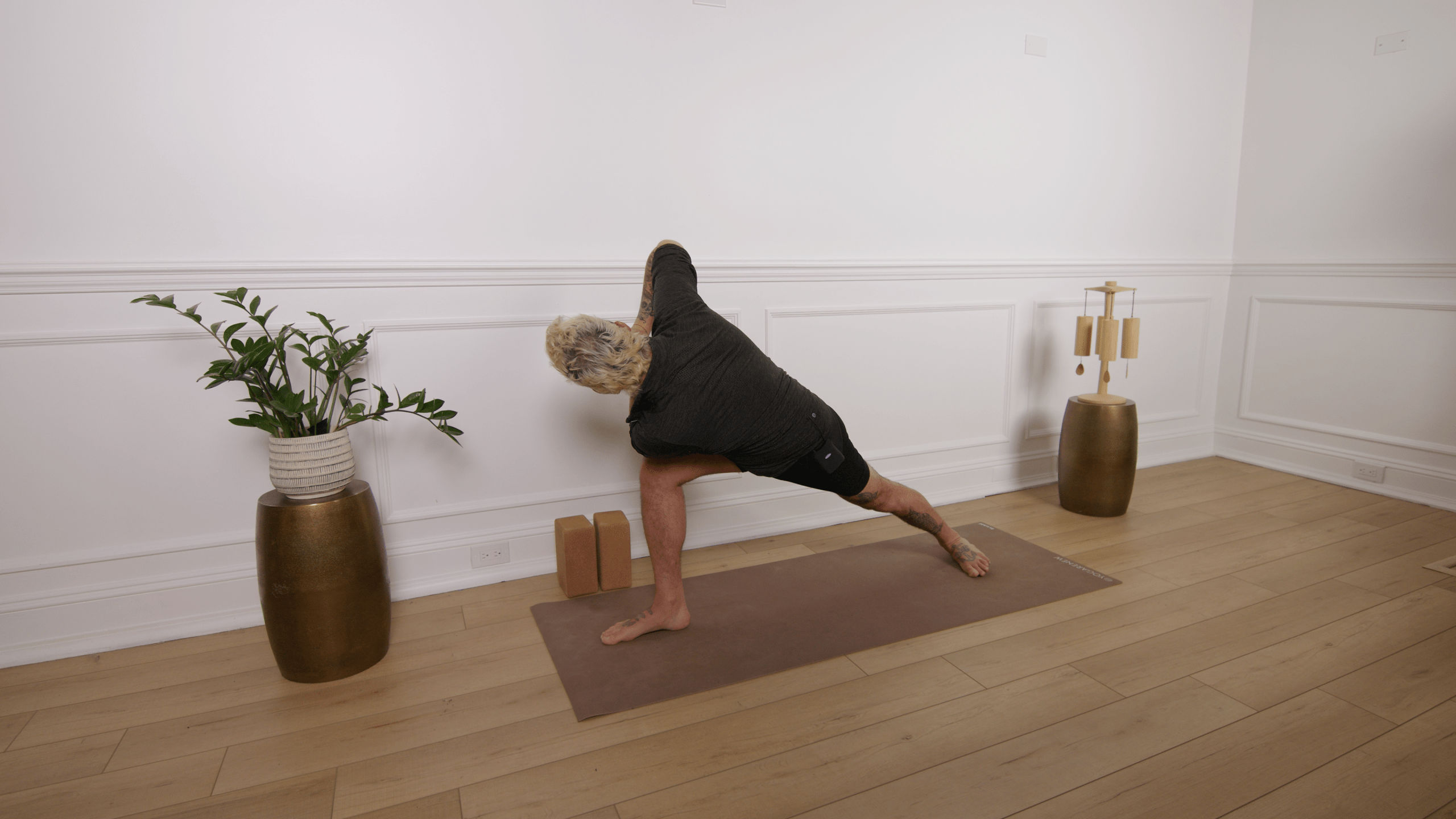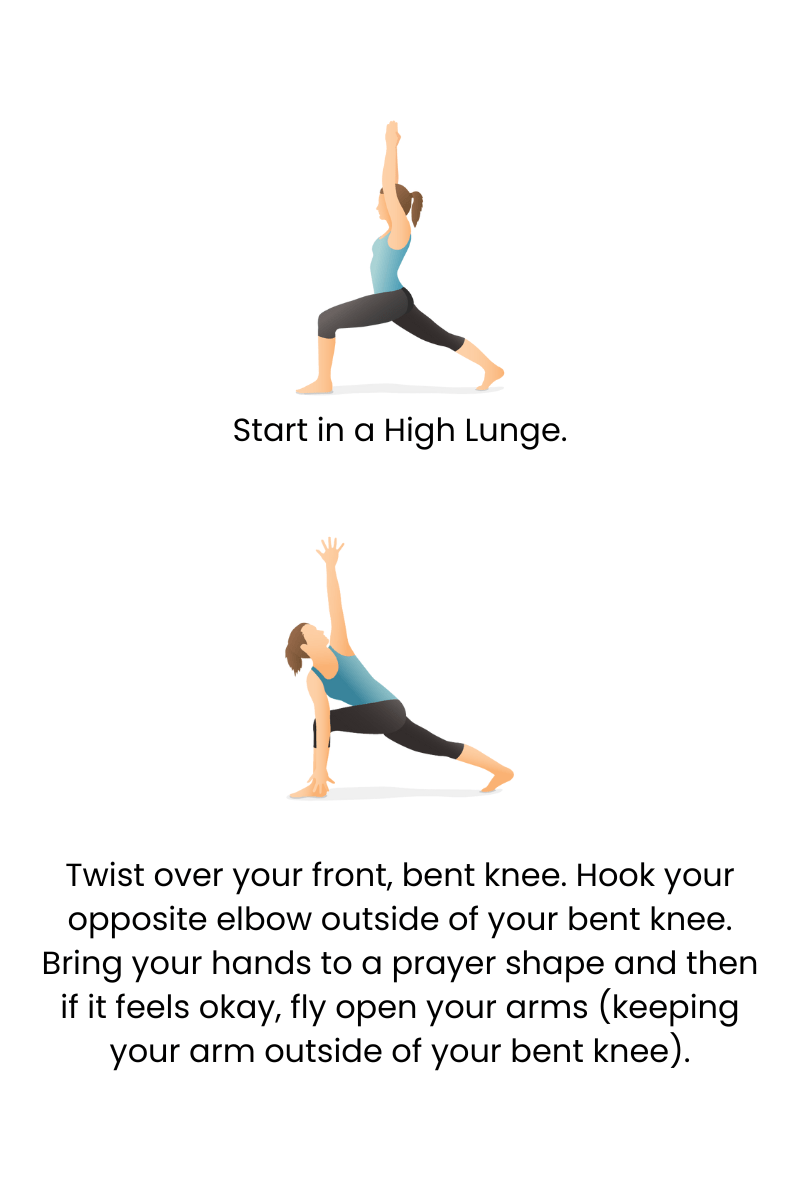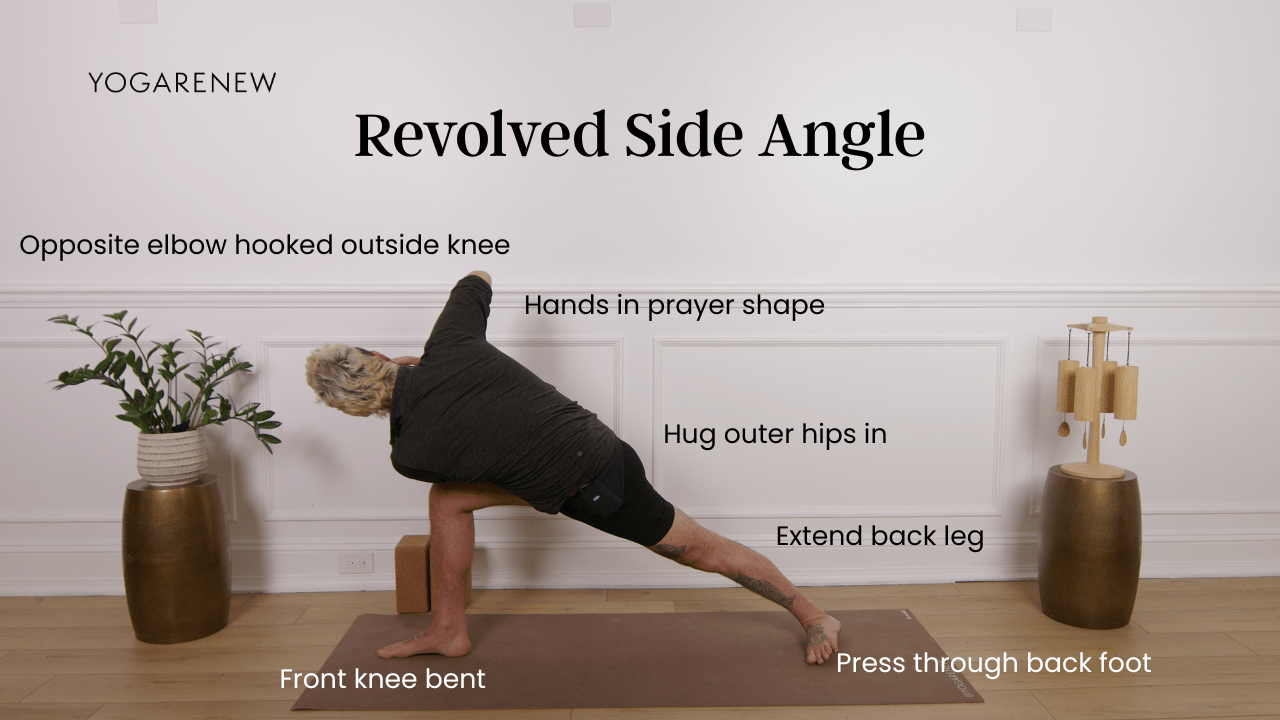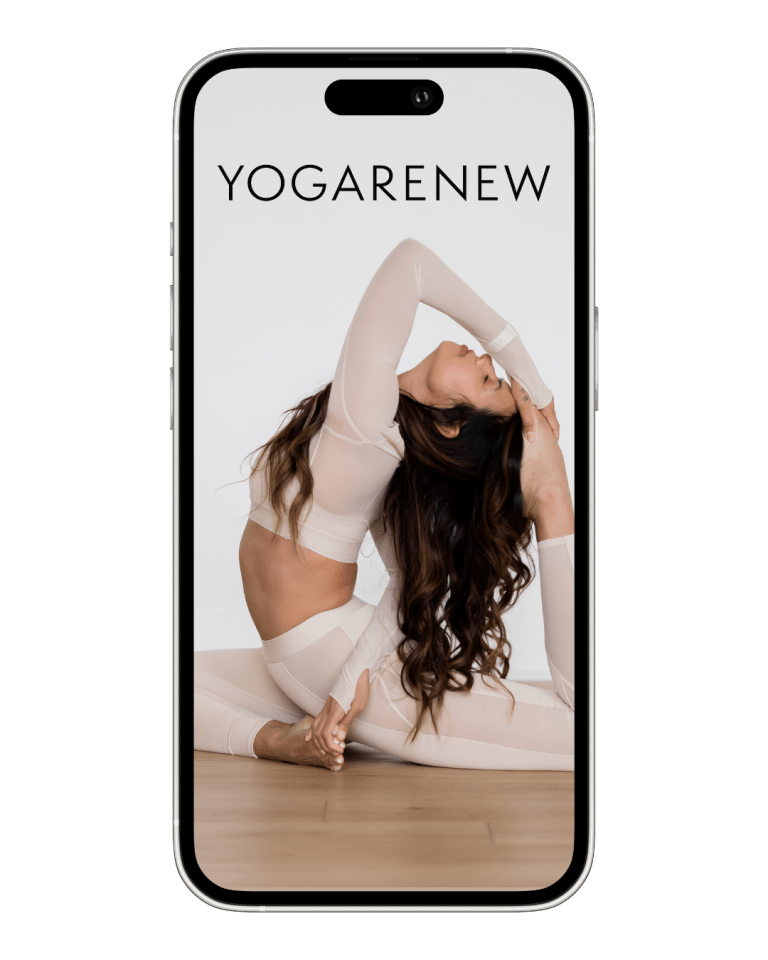What is Revolved Extended Side Angle?
English Name: Revolved Extended Side Angle Pose
Sanskrit Name: Parivrtta Parsvakonasana (pronounced pah-ree-VRIT-tah PARSH-vah-cone-AHS-uh-nuh)
Category: Standing, Twist, Strength, Intermediate

English Name: Revolved Extended Side Angle Pose
Sanskrit Name: Parivrtta Parsvakonasana (pronounced pah-ree-VRIT-tah PARSH-vah-cone-AHS-uh-nuh)
Category: Standing, Twist, Strength, Intermediate
Revolved Extended Side Angle Pose, or Parivrtta Parsvakonasana, is a powerful standing twist that strengthens the lower body, engages the core, and stretches the spine. As a variation of Extended Side Angle Pose, it adds a deep spinal rotation, enhancing detoxification and mental focus while improving flexibility and balance.
Often included in Vinyasa, Hatha, and Power Yoga flows, this pose demands stability, breath control, and alignment awareness—making it a transformative posture for intermediate and advanced practitioners alike.


Parivrtta Parsvakonasana is a dynamic, full-body posture that combines the grounding power of standing poses with the detoxifying and energizing qualities of spinal twists. It strengthens and stabilizes the lower body, improves spinal health, and builds deep core strength—all while cultivating balance, breath control, and focus. A strong addition to any well-rounded yoga practice, this pose is both challenging and deeply rewarding.
It’s best for those with some experience. Beginners can modify by dropping the back knee or using a block.
Quads, glutes, obliques, erector spinae, and core stabilizers are all engaged.
Yes—use props and shorten your stance as needed.

Explore classes & pose tutorials for any style, format, duration or experience level with a free account in the YogaRenew app. Or subscribe and gain access to workshops, live classes and more.